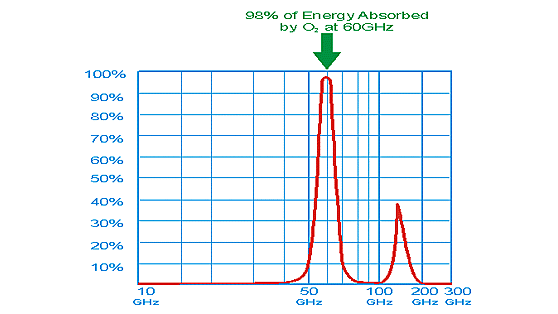
Later, some would try to claim that the COVID-19 outbreak was caused by introduction of 5G frequencies and not a virus. Sources:
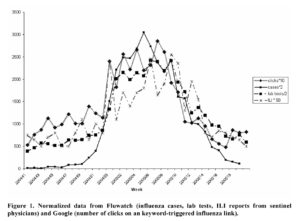
Abstract Background Syndromic surveillance uses health-related data that precede diagnosis and signal a sufficient probability of a case or an outbreak to warrant further public health response. Objective While most syndromic surveillance systems rely on data from clinical encounters with health professionals, I started to explore in 2004 whether analysis of trends in Internet searches…
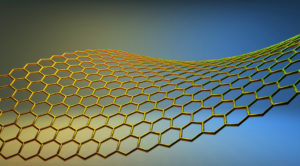
2004 Andre and Kostya frequently held ‘Friday night experiments’ – sessions where they would try out experimental science that wasn’t necessarily linked to their day jobs. One Friday, the two scientists removed some flakes from a lump of bulk graphite with sticky tape. They noticed some flakes were thinner than others. By separating the graphite…

Grant Final Report: Review of Vaccine Adverse Event Reporting System (VAERS) determines that fewer than 1% of vaccine adverse events are reported. Even if we assume that the COVID-19 situation has created increased awareness of VAERS, we can assume that adverse reactions are still grossly underreported. If nothing has changed, this means that statistics derived…
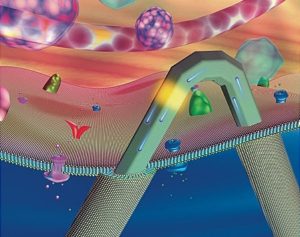
Hyman professor of chemistry Charles Lieber has created a transistor so small it can be used to penetrate cell membranes and probe their interiors, without disrupting function. The transistor (yellow) sits near the bend in a hairpin-shaped, lipid-coated silicon nanowire. Its scale is similar to that of intra-cellular structures such as organelles (pink and blue…
This is about an earlier strain of coronavirus. Source:
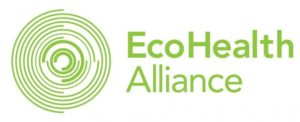
On behalf of the U.S. government, often the military, Daszak scours the globe for animal pathogens and brings them back to the lab to be catalogued, investigated and manipulated. $ Award Amounts: $3.7M Grant description: Understanding the risk of bat coronavirus emergence But this is just one project. A search of the system showed 37…

The Nobel Prize in Physiology or Medicine 2015 was divided, one half jointly to William C. Campbell and Satoshi Ōmura “for their discoveries concerning a novel therapy against infections caused by roundworm parasites” and the other half to Tu Youyou “for her discoveries concerning a novel therapy against Malaria.” The Ivermectin Story emphasizes the organic…
A co-author of the paper is Shi Zhengli-Li, the “Bat Lady” from the Wuhan Institute of Virology. Two of the authors, Ralph Baric and Boyd Yount, are listed as inventors on Patent 7279327. Source: Related: See also, on this site: UNC Chapel Hill files patent 7279327: Methods for producing recombinant coronavirus
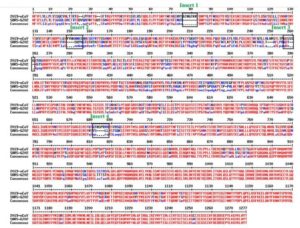
The paper was submitted and then quickly withdrawn. Behind the scenes, Anthony Fauci appears to have been conducting damage control. Sources: For this post, several of the sources have additional notes listed with them under the URLs. The Sources section is always important in this project, but the notes in this post make this section…
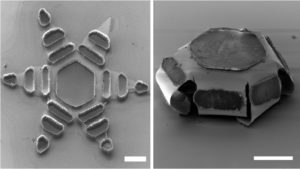
Inspired by a parasitic worm, researchers at Johns Hopkins Medicine and Johns Hopkins Engineering team up to design “theragrippers” to deliver medicine to GI tract. Problem: extended-release drugs pass too quickly thru GI tract. Solution: Johns Hopkins Medicine and Johns Hopkins Engineering design dust-sized machines that snap to colonic walls and release medicine gradually. Once…
This event is an example of why positive studies of ivermectin will end with “not enough evidence” or “more study needed.” Conversely, it is why we see studies indicating that the jabs are failing but end with suggestions that the solution is more shots. It is also important to remember that the Covid jabs could not…

Dr. Geert Vanden Bossche is a pro-vaccine expert. He is concerned about a vaccination campaign being conducted during a pandemic. According to him, newly vaccinated people are more vulnerable to infection while their systems develop immunity to the target virus. During a pandemic, the risk of becoming infected is much higher. If vaccinated become infected…

Nobel prize winner Dr. Luc Montagnier tells us how variants are being generated in the bodies of vaccine recipients. The video is in French, but it has accurate English subtitles. Sources: See also, on this site: Rep. Nancy Pelosi explains the “Wrap Up” Smear. Pro-vaccine expert Geert Vanden Bossche, PhD, DVM, presents keynote address at…
As of April 2021, four adenovirus vector vaccines for COVID-19 have been authorized in at least one country: The Oxford–AstraZeneca vaccine uses the modified chimpanzee adenovirus ChAdOx1 Sputnik V uses human adenovirus serotype 26 for the first shot and serotype 5 for the second. The Johnson & Johnson vaccine uses serotype 26. Convidecia uses serotype 5. Research article excerpt: During the last months many countries have…
The designers of the COVID-19 vaccines expected the contents of a jab to remain in the muscular tissue where they were injected, usually an arm. This assumption was wrong. A study document obtained from the Japanese regulatory agency shows that the vaccine contents enter the bloodstream and travel to the various organs. Lab animals injected with…
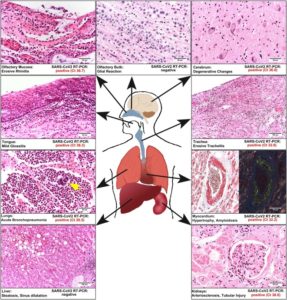
June 2021: Highlights We report on a patient with a single dose of vaccine against SARS-CoV-2. He developed relevant serum titer levels but died 4 weeks later. By postmortem molecular mapping, we found viral RNA in nearly all organs examined. However, we did not observe any characteristic morphological features of COVID-19. Immunogenicity might be elicited,…

Dr. Richard Fleming presents ‘Event 2021’, a science-based presentation on the COVID-19 pandemic, from the virus, to vaccines, treatments, and the Public Health response. Virtually everything in this presentation is backed by documentation. If you have time for it, this is probably the best information out there on COVID-19. Perhaps you can view it in…

The following was stated in an open letter posted on medisolve.org: From: Dr. Tess Lawrie (MBBCh, PhD), Director, Evidence-based Medicine Consultancy Ltd and EbMC Squared CiC To: Dr. Raine, Medicines and Healthcare Products Regulatory Agency Statement on page 7 of letter: “The MHRA now has more than enough evidence on the Yellow Card system to…

Disclaimer: I am not a medical professional of any kind. Please consult your medical advisor. What I can tell you, though, is that the COVID-19 “vaccines” are something humanity has not dealt with before. The suggestions below are not guaranteed to work, but they may be your best chance for coping with the ongoing…
Leviticus 17:11 (ESV) For the life of the flesh is in the blood, and I have given it for you on the altar to make atonement for your souls, for it is the blood that makes atonement by the life. Researchers have found a number of strange anomalies in blood of COVID-19 jab recipients, including spiking of…
There is a rumor going around that the approval is for the name change. After looking at the Approval Letter from the FDA’s Comirnaty and Pfizer-BioNTech COVID-19 Vaccine page, it does appear to be the licensing letter for the inoculation. This is apparent in the terms used, which are different from those in an Emergency…
Remember those chicken pox parties? It would seem from this study that the best protection is to have had COVID-19 before. In other words, it would appear that it is better to engage in good prevention protocols (minus the jabs) and just deal with it when it happens than it is to try to develop…
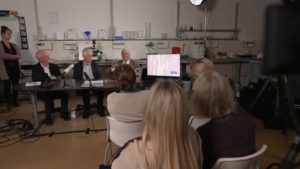
Backed by Professors Sucharit Bhakdi, Stefan Homburg and Reiner Fuellmich’s Corona Auschuss, a new forensics institute held its first press conference on Monday to present the evidence now available on the fatal accidents that may have resulted from so-called anti-covid injections. The first part of the press conference focused on autopsies of vaccinated people. During these…
This is potential proof of danger from shedding of spike proteins from jabbed people. The Pfizer study protocol for the COVID-19 inoculations recognizes the shedding risk. For the unvaccinated age group 0-14, most associations between mortality and vaccination in adults are positive (among 39 r values with unadjusted two-tailed P < 0.05, 32 are positive…
New scientific findings in the prestigious Lancet Infectious Diseases journal blow a hole in the argument that workers need to get vaccinated to protect those around them. The findings prove the foolishness of forcing police and other public employees to get jabbed or lose their pay. And President Joe Biden should retract his order to…
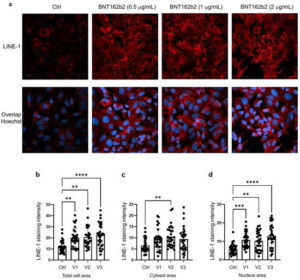
“In this study we present evidence that COVID-19 mRNA vaccine BNT162b2 is able to enter the human liver cell line Huh7 in vitro,” the researchers wrote in the study, published in Current Issues of Molecular Biology. “BNT162b2 mRNA is reverse transcribed intracellularly into DNA as fast as 6 [hours] after BNT162b2 exposure.” … The whole process occurred rapidly…
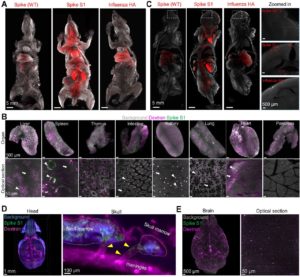
The lack of evidence for the viral presence and especially viral replication in the brain led to the hypothesis that virus-shed proteins circulating in the bloodstream may promote an inflammatory response independent of direct viral infection of the affected organs, including the brain. Notably, the highly immunogenic spike protein, also used in COVID-19 vaccines, might…
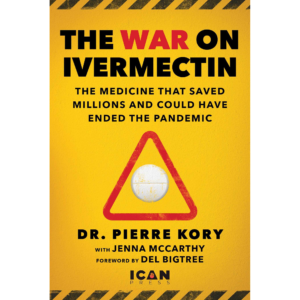
Big Pharma and health agencies cry, “Don’t take ivermectin!” A media storm follows. Why then, does the science say the opposite?” Ivermectin is a dirty word in the media. It doesn’t work. It’s a deadly horse dewormer. Prescribe or promote it and you’ll be called a right-wing quack, be banned from social media, or lose…